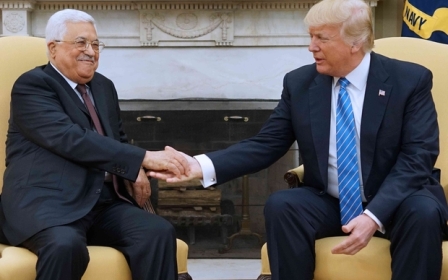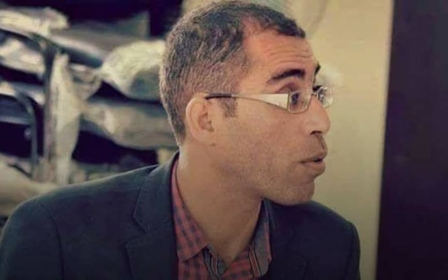The Matrix: Rights, government and daily life in Palestine

I'd like to introduce you to three Palestinian women: Sarah, Fatima and Khalida.
Sarah is from East Jerusalem and has an East Jerusalem ID. Fatima is from Haifa and has Israeli citizenship. Khalida is from Ramallah proper and has a PA-issued ID card (pre-approved by the military's "Israeli civil administration").
This fragmentation of governance results in a structure of discrimination that is becoming more and more entrenched
Each of these women has been offered a job in the West Bank city of Ramallah, and each would be thrilled to accept. But whether they can – well, that depends.
Sarah can move to Ramallah at the risk of losing her East Jerusalem ID number and its correlated advantages, like Israeli health insurance. If she accepts the job, she must commute daily and, fortunately, her yellow licence plate displaying an Israeli flag allows her to drive in both the West Bank and Israel proper.
Fatima, with her Israeli citizenship, is forbidden from living in Ramallah. Like Sarah, she can commute in a yellow-plated car.
Khalida is already living in Ramallah. But she has different problem: the job includes travel, and she needs a permit to even enter East Jerusalem and Israel proper. To stay overnight in Israel would require additional permissions.
This is how governance works in Palestine. As it does around the world, "governance" refers to the rules that set out how citizens are to live their day-to-day lives.
Yet unlike as in much of the world, in Palestine, governance – and how lives can be lived – varies from place to place and from citizen to citizen.
Inconsistent governance by way of occupation
What makes the application of governance so varied in Palestine is the Israeli occupation and how it affects citizens, some more than others. This fragmentation of governance results in a structure of discrimination that is becoming more and more entrenched.
Well-intentioned initiatives from the international community and particularly the EU have sought to support governance projects and rule of law initiatives under the Palestinian Authority – for example, through a $4.9mn Seyada II project, aiming at improving the delivery of justice to all Palestinians.
But in working within the status quo, these efforts ultimately support occupation. "What we are doing isn't working. In fact, it's making things worse," wrote Ali Gharib, summarising in one sentence the open letter sent by 19 prominent Europeans to the European Union foreign policy chief at the time, Catherine Ashton, in April 2013: "It is time," the letter states, "to give a stark warning that the occupation is actually being entrenched by the present Western policy."
What is needed is a new approach – go beyond advancing governance projects to support rule of law initiatives in Palestine, and instead use governance as a way in to dismantle the current structure of entrenched discrimination.
Who governs Palestine?
The 2003 Amended Basic Law is the written constitution of the Palestinian Authority for the interim period. This comprehensive document that includes 121 articles, including a bill of rights section, falls short in the lack of a coherent and consistent approach to government for all Palestinians.
Today, Hamas is the government in Gaza, and the Palestinian Authority (PA) is the government in the West Bank. The Israeli government holds power in East Jerusalem. But that's not the whole answer.
When we talk about the 'state' in Palestine, we are talking about the background entity we refer to when we talk about government. In Palestine, this means Israel
In the West Bank, in the context of Israeli occupation, the PA isn't the creator or distributor of governance. In 23 years, it has brought few real changes to the way the West Bank is governed.
Instead, failed peace negotiations have kept the Oslo Accords' framework of governance, which was intended to be temporary, largely intact. This has allowed Israel to remain an occupying force exercising sovereign powers over the Occupied Palestinian Territories (OPT), while the PA has become the main provider of public services for the Palestinian population of the West Bank and Gaza Strip.
Israel's role as a supra-national authority limiting the power of governmental authorities makes the situation in Palestine different from anywhere else on earth.
And it means that when we refer to the "state" in Palestine, we aren’t talking about sovereign nation-states per public international law. In fact, we can't unless- or until - Palestine and Palestinian citizenship are formally recognised.
Rather, when we talk about the "state" in Palestine, we are talking about the background entity we refer to when we talk about government. In Palestine, this means Israel.
Different rules for different people
Against this backdrop, there is a second complicating factor: the individual. In Palestine, people's daily lives unfold in a complex matrix of laws, rules, orders, norms and institutions that shape and compel every action.
What is law for a Christian - for example concerning marriage and divorce – from one place may not be law for his Muslim neighbour. What is law for a woman – such as heritage rules – may not be law for her male relative or brother. What is law for people from different parts of Palestine – such as what constitutes a crime or not; what is considered as an illicit act or not – can experience wildly different rights, restrictions or privileges.
All of these elements impact an individual's day-to-day life – even on such mundane aspects as travel.
Going back to the example of Sarah, Fatima and Khalida, each of these three women has separate protocol for how she can travel abroad. Sarah and Fatima can fly out of Ben Gurion airport, or take a bridge into Jordan – but not the same bridge.
Sarah must cross the Allenby/King Hussein Bridge, and Fatima must cross at the Sheikh Hussein crossing point, which is recognised as an international border. Khalida cannot fly through Ben Gurion, so she must take the Allenby Bridge to Jordan to fly out of Amman. When she takes the bridge, Fatima must use separate halls and procedures to those used by foreigners and East Jerusalemites – such as Sarah.
For those in besieged Gaza, there is no such access to movement. The role of supra-national authority Israel is supreme over this aspect of daily life. The life of anyone holding a Gaza-issued ID card and who is based outside Gaza is even more complicated, especially in the West Bank city of Ramallah, where Gazan ID-holders are strictly limited in their ability to live and work, as well as enter and exit the area.
This approach to governance can best be described as an "I'll know it when I see it" model, something that depends on the parties involved and the individual (Israeli) soldiers on the scene.
What should be even-handed and predictable is instead inconsistent. And this situation, if it continues, will have a catastrophic effect on rule of law in Palestine: it will lead us to a situation that is the complete opposite of rule of law.
Reinventing the matrix
This overview of the Palestinian matrix should sound an alarm for international policy-makers, particularly those inclined to support rule-of-law and governance efforts within Palestine. Various rule-of-law initiatives are guilty of this: they either forget about Israel as occupation, or they assume the Israeli occupation is an authority exercising power over people in equal ways.
Both conclusions are misplaced, and both lead to the same damaging outcome of support for the PA under occupation, which is a way of supporting the entrenchment of an apartheid regime.
Back to the example of the EU's initiatives aiming at supporting the rule of law in the PA area. By promoting the rule of law under occupation, it is argued, the EU community ended up in reality sponsoring the consolidation of an illiberal and authoritarian regime in the PA territory which survives only thanks to international aid and security coordination with Israel.
EU policies also didn't help ameliorate the justice system; instead they helped consolidate the current policies of inclusion and exclusion in the post-Oslo arrangements, in which Israel considers the PA as "sub-contractor in the task of enhancing Israel’s security," as former Israeli foreign minister Ben Ami puts it.
Governance can offer a way in to dismantle the current structure of entrenched discrimination. Rather than asking how the PA can better govern in the context of Israeli occupation, international policymakers should be looking at alternative models for governance that go beyond occupation.
Such models, first, should build on the recognition of the existence of an apartheid regime, and, second, assume that governance is not centred around the idea of the state but around basic rights, intrinsically linked to the idea of freedom, equality and dignity.
Within this anti-apartheid framework, the focus shouldn't be on the final settlement, whether the two-state or the one-state solution. As eloquently stated by Nadia Hijab and Ingrid Jaradat Gassner: "Whatever the ultimate political settlement, it should enable the Palestinians to finally be free from colonisation, to enjoy equal rights, and to have rights in and to their homeland, including the right of return to their homes and lands and compensation for what has been lost."
This article is drawn from research presented as part of the AKU-ISMC Governance Programme Dialogues series.
- Asem Khalil is an associate professor of public law, H.H. Shaikh Hamad Bin Khalifa Al-Thani Chair in Constitutional and International Law, Birzeit University. He is the former dean of the faculty of law and public administration (2012-2015), and of the Ibrahim Abu Lughod Institute of International Studies (2010-2012). He holds a PhD in public law, Fribourg University, Switzerland, a master's in public administration from the National School of Administration, France, and a doctorate in Utriusque Juris, Lateran University, Italy.
The views expressed in this article belong to the author and do not necessarily reflect the editorial policy of Middle East Eye.
Photo: Some of 700 Palestinians waiting for many days to cross the Israeli-Jordan border stand behind wire fencing near the Allenby Bridge in July 2002 (AFP)
Middle East Eye propose une couverture et une analyse indépendantes et incomparables du Moyen-Orient, de l’Afrique du Nord et d’autres régions du monde. Pour en savoir plus sur la reprise de ce contenu et les frais qui s’appliquent, veuillez remplir ce formulaire [en anglais]. Pour en savoir plus sur MEE, cliquez ici [en anglais].





